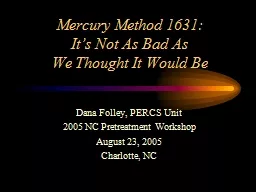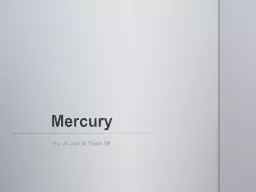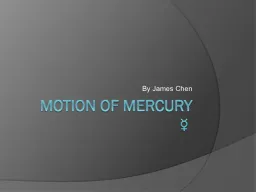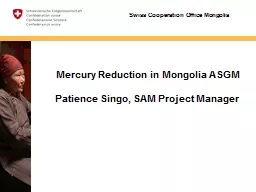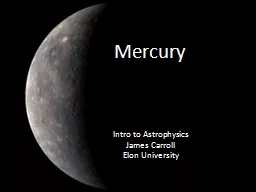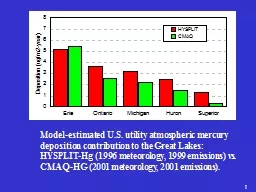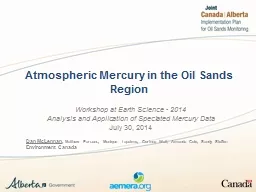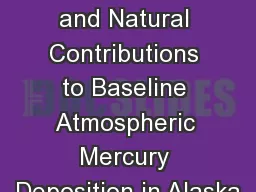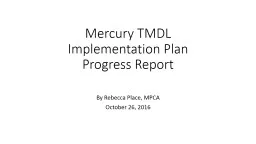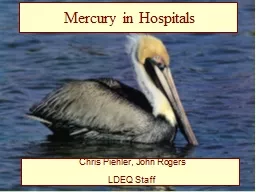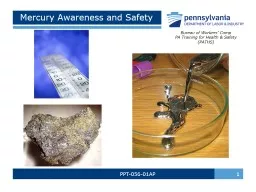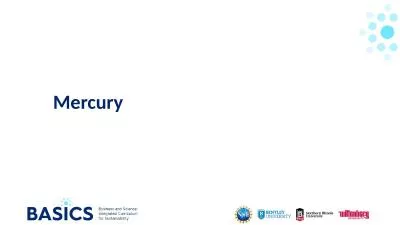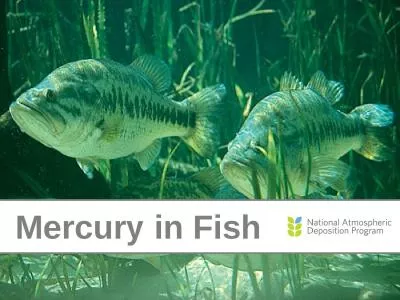PPT-Mercury Method 1631: It’s Not As Bad As
Author : cheryl-pisano | Published Date : 2018-11-08
We Thought It Would Be Dana Folley PERCS Unit 2005 NC Pretreatment Workshop August 23 2005 Charlotte NC Mercury Sources Natural Sources volcanoes forest fires soils
Presentation Embed Code
Download Presentation
Download Presentation The PPT/PDF document "Mercury Method 1631: It’s Not As Bad A..." is the property of its rightful owner. Permission is granted to download and print the materials on this website for personal, non-commercial use only, and to display it on your personal computer provided you do not modify the materials and that you retain all copyright notices contained in the materials. By downloading content from our website, you accept the terms of this agreement.
Mercury Method 1631: It’s Not As Bad As: Transcript
Download Rules Of Document
"Mercury Method 1631: It’s Not As Bad As"The content belongs to its owner. You may download and print it for personal use, without modification, and keep all copyright notices. By downloading, you agree to these terms.
Related Documents

